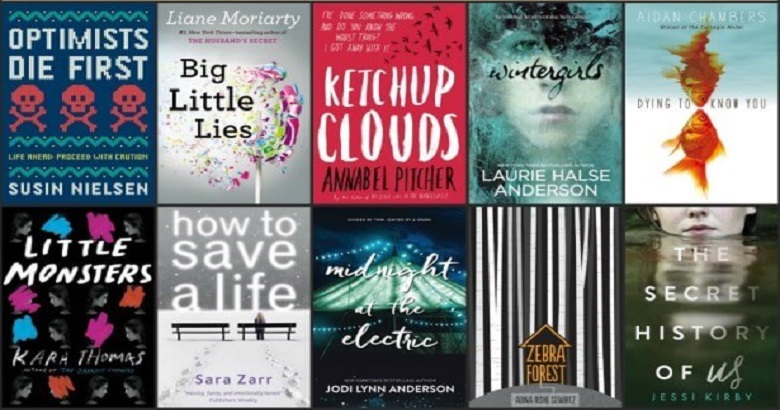As you agree, book cover design is an important marketing tool for your book.
It was true before Amazon began doing less and less organic book marketing with its Also Bought and emails, and it’s even more valid now in 2024, as book marketing becomes harder and harder, boosting the importance of your cover!
But how do you judge if a book cover is great, good, or bad?
The most important skill that authors lack is the ability to distinguish outstanding design. Whether you want to hire a book cover designer, buy a premade book cover, or make your own cover (DIY), this is something you must improve as an indie author, especially if you are concerned that your current book covers aren’t up to pace.
After reading this, you’ll be able to better identify and avoid these modern and vintage book cover design mistakes! So, without further ado, let’s get started.
While some are minor issues that won’t affect your book sales, others can result in negative reviews from dissatisfied readers, prevent you from receiving a BookBub feature, or cause book bloggers to ignore your book for reviews.
These are pretty common on DIY covers, as well as specific covers created by fresh designers who are still learning the art of modern and vintage book cover design.
Let’s look at them in more detail.
-
Genre Miscommunication
This can be a subtle mistake, but it has serious consequences.
Your cover may convey that your book is a psychological thriller, but in fact, it is a high-octane action thriller with lots of chases and shooting. The reader’s expectations for each are different, and when they buy the book, you may receive negative feedback from readers who are dissatisfied that they were misled (unintentionally).
Not only will you miss out on reaching the ideal readers who will enjoy your book, but you may also lose sales due to negative reviews.
The risk of this mistake is highest when DIYing or purchasing a premade vintage book cover design, as it is easy to fall in love with an idea or design rather than staying impartial. We all have biases and blind spots, so having a person or writer mastermind in your genre who can provide an objective perspective is beneficial.
-
DIY-Looking Cover
This is often the easiest mistake to detect because some covers are absolutely a disaster.
However, some covers show subtler signs of DIY and are generally more difficult to identify (especially from newer, novice designers). This tends to be mistakes of misplaced text (too close to the edges of the cover), text that is too small, a bad hierarchy of design elements, or stretched images that look unnatural.
-
Too Much Subjectivity
This happens whenever an author’s preferences powerfully influence the design. Instead of designing a cover that’s compatible with genre requirements, an author may want a specific colour or visual element on the cover that does not fit the genre or is simply a poor design choice.
Cover designs should not be boring or overly cliche. Consider adding a unique element to your cover design, but when suggesting ideas, don’t get too attached to anything.
A designer should never reject the author’s ideas without explaining them. A professional designer is hired to create and serves as the author’s guide to what works and what doesn’t. Thus, the designer must explain in detail why a specific colour or design element on a cover does not work.
-
Weak Hierarchy or Structure
Every design should have a simple and clear hierarchy of elements.
Whether it’s a vintage book cover design, website design, or poster, how a design is laid out influences how readers perceive it.
This is one of those design things that non-designers will not spot, which is why DIY covers may be so bad.
A good modern or vintage book cover design can direct the viewer’s eye from one element to another in the appropriate order. It also ensures that elements do not create a mess that is difficult to understand.
Design, as an art form, offers distinct structures and hierarchy options.
Structure
All book covers have text and visual layout patterns that are repetitive once you understand them and recognise those that don’t have them. Not using these layout patterns creates a weak design.
Breaking the rules only for the sake of breaking them is not always a good idea. Breaking such patterns can be effective if done by people who are already familiar with the rules. A clever new pattern can result in a worse design than keeping it simple. Sometimes, a small, simple change to an existing design structure will give a better result than completely recreating the design structure.
Hierarchy
The hierarchy is often different on each cover, which means that all design elements, title, main visual, author name, and supporting visuals are arranged in a way that matches their importance.
On the cover of Ruta Sepetys’ book, the author’s name is the first thing that stands out before the eye is brought down to the visual, and only then do you notice the title. Even in a small thumbnail, it isn’t easy to read, but since the author’s name is the key selling point, this is done intentionally. As a result, the name is the most prominent element, followed by the visual, and the title is the last.

As you can see, the size of the title and author name is the same. The other text is difficult to understand due to its various sizes and colours, and it is too much for a simple tagline that piques the reader’s interest. It’s like a blurb; thus, it’s too long.
-
Too Many Fonts on The Cover
Never use more than three fonts. That can lead to a huge problem.
The primary guideline for good typography is to use two contrasting fonts. Sometimes, a third font is acceptable and can be utilised. However, if you use a third font, it should serve as a tagline or supporting text, not the main message.
You can often change the weight or thickness of a single font, such as bold and regular, regular and italic, and so on.
If your designer sends you a cover with more than three fonts, ask why! They should have a good explanation.
-
Boring and Bland Design
A cover may have the right visual for the genre, well-made typography, and everything else, but if it lacks contrast and brightness, it will not capture the attention of the reader. Bland designs are drowned in the sea of great covers, which tend to be quite vibrant in many genres these days.
Vibrancy is vital in genres such as fantasy, YA, urban fantasy, and science fiction, where most covers are vibrant and colourful. Contrast is essential for covers. It’s joined the thriller/mystery scene, too.
NOTE: Excessive vibrancy is unnecessary if the goal is to create a more abstract or melancholy cover. This is not a must for all covers, but you should be aware of the trends in your genre and understand the decisions made.
-
The Title Is Unreadable in A Small Thumbnail Size
The book title should be readable in the small thumbnail size on Amazon.
While a good cover image may be enough to pique the reader’s interest, an intriguing title increases the chances that the reader will click through your Amazon book page.
The author’s name can be legible (not simple to see at first sight but readable) to nearly as large as the title, making it easy to read all at once.
-
Too Much Text or Visual Elements
When the cover has too many elements, it can be difficult to interpret, and structure and hierarchy can be lost.
Never use too many symbols in the story. Don’t add every significant person, gun, cityscape, religious symbol, etc. The cover does not need to include all the story elements or depict a scene in detail.
It is more important to convey the right genre or subgenre and the overall tone of the story than to show the exact details of one scene. The cover’s purpose is to entice the reader to buy the book’s story, not to reveal or ruin it.
Covers that need to be abstract or simple(think Non-Fiction) typically have a minimalistic design with only one visual and matching text. Often, just one cool visual is enough.
-
Low-quality Images
Modern or vintage book cover designs that catch readers’ attention must include images of high quality. No tiny images captured with an old phone or small images found on Google. That will show amateurism and give the impression that the author did not put in enough effort (even if this is not true).
If you require a print book cover as well, images that are too old and poorly scanned will not work because they can become pixelated and ruin the design. Nothing screams DIY more than pixelated images.
NOTE: Sending low-quality images as references to designers is fine. It’s good for them to see and understand what you desire. However, they will not use them in the final product.
-
Using Copyright-Protected Images
Do not Google photos; stick them on your cover!
Some things cannot be used on book covers because they are copyright-protected, and you might get sued for this. For example, if you need a sports car, do not use a Ford Mustang image; the Mustang logo is copyrighted and cannot be used without clear written permission from Ford Motor Company’s attorneys (good luck with that).
Some places, such as the Eiffel Tower, are forbidden to be used as covers. Editorial images are also prohibited. They are only permitted for editorial purposes, such as blog articles, and not for commercial projects, such as book covers.
Good Copyright-Free Images
Creative Commons is a good source of free images suitable for covers. Some require attribution, while others do not, and there are several license types to choose from.
FAQ’s – Frequently Asked Questions
1. What common mistakes make a book cover appear unprofessional?
Using low-quality images, cluttered layouts, and out-of-date fonts can make it look like a vintage book cover design that is amateurish. A poorly chosen colour scheme and mismatched elements distract readers and reduce the book’s appeal.
2. How do font choices influence book cover design?
Fonts convey tone; an inappropriate choice can convey the wrong message. Overly styled or difficult-to-read fonts confuse readers and reduce visual impact. Simple, clear typefaces that suit the genre enhance a cover’s professionalism.
3. Why does colour matter in book cover design?
Colour influences the mood and draws attention. Poor colour combinations or oversaturated hues cause visual chaos, driving readers away. Colour is used thoughtfully to give balance, reflect the genre, and entice readers.
4. How can overcrowding impact a book cover's appeal?
A cover cluttered with too many elements confuses readers and distracts from the main point. A clean, focused design highlights the title and major imagery, making a more memorable impression.
5. What function does imagery have in making a successful book cover?
Imagery is critical for storytelling. Poorly chosen or irrelevant visuals confuse readers, reducing the book’s attractiveness. A bold, genre-appropriate graphic complements the content, attracting the intended audience.



